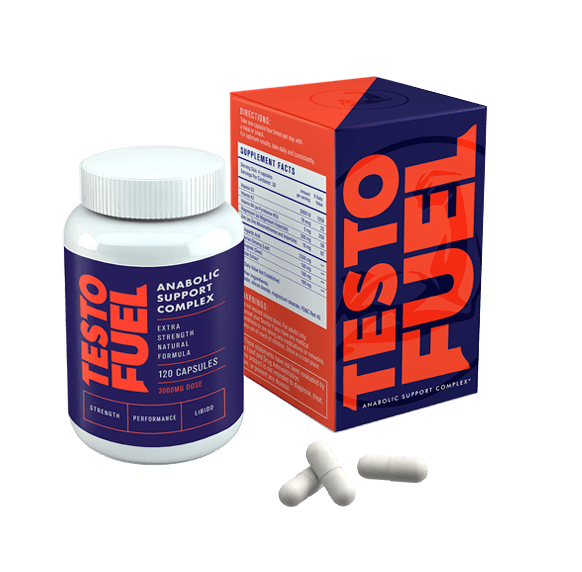
This is a guide for beginner weight loss. Plain and simple, it uses weight lifting to get you lean and shredded
If you’ve struggled to lose weight in the past but are motivated as hell to sculpt a body that is more athletic, stronger and gives you the confidence to wear what you want to wear, then this guide is your express ticket.
Using science-led approaches to weight lifting, this detailed and straight-down-the-line program provides all the tools you need to reach your dream physique in as little as a few weeks.
A leaner, stronger body is just around the corner.
Let’s get to it.
What does this program cover?
| Goal: | Weight loss, fat loss |
| Aimed at: | Beginners |
| Program duration: | 4 weeks |
| Workout duration: | 45-60 minutes |
| Equipment needed: | Barbell, dumbbell, Resistance machines, body weight |
Weight Lifting for Weight Loss
For many people, weight loss can be confusing.
And with so much information out there, we can see why.
But one thing is clear… lifting weights helps you improve your strength, stamina, and confidence.
It’s one hell of a fat loss tool.
Over the last few years we’ve seen a sharp rise in the number of people using strength training, body weight routines, circuit classes and other types of resistance training to carve out a lean physique.
And it’s working too.
Lifting weights to lose weight
Studies show that strength training directly stimulates your metabolic rate, leading to more calories burned after your workout [1].
It does this via a process called excess post-exercise oxygen consumption – essentially, your body uses stored energy to restore and repair itself after a session of lifting weights.
In fact, strength training has been shown to elevate the number of calories you burn for up to 36 hours post-exercise.
Interestingly, the EPOC effect seems to be higher when weight training uses heavier weights combined with a higher number of sets [2].
This has a substantial effect on overall energy expenditure.
Using short rest periods between sets (60 seconds or less) also has a significant effect on calorie burning too.
Key Point: Weight training not only burns calories during exercise, but elevates your metabolic rate afterwards too.
[/infobox]
Resistance training boosts health
Not only does strength training help you enhance the shape of your body, build strength and help fight fatigue, it also has a significant affect on your health too.
According to research published in the journal Medicine and Science in Sports and Exercise [3], “resistance training is effective for developing fitness, health, and for the prevention and rehabilitation of orthopedic injuries”.
All of the major US health organizations promote lifting weights as part of a health benefits program, with numerous studies showing strength work improves health outcomes and reduces risk of chronic diseases:
- Cardiovascular, metabolism and cognitive disorders
- Bone related diseases such as osteoporosis
- Helps to fight obesity
- Improves symptoms of arthritis and other inflammatory diseases
Which is better for weight loss: cardio or weight training?
When it comes to changing the way you look, developing a lean and shapely physique and elevating your fitness levels, there’s more to your approach than cardio.
The bottom line is that both strength training and cardio improve health, performance and body composition.
But it’s about finding what you prefer most.
For years and years, the main tool for fat loss was to lace up your gym sneakers and hit the treadmills for hours and hours.
It kind of worked – after all, cardio does burn calories – but it was long-winded and boring.
Cardio burns more calories that resistance-based exercise during exercise.
That’s not up for debate.
But the effect that lifting heavy things has on your metabolism makes it a potent tool in your fat fighting war.
You can also integrate the effect of cardio into your weight training too.
By cleverly ordering your exercises, you can increase your heart rate, boost your breathing rate and elevate your body temperature just as much as you would do on the rowing machine or bike.

Key Point: Weight training is a short, sharp and fun way of ramping up your daily calorie burn, shape your muscles and improve your health and performance
Fat Loss Training – How to Get the Best Results
Strength training is a valuable tool in the war on body fat.
But if you really want to zone in on a more shredded, leaner physique you’ll need more than just an strong iron game.
Here are some additional pointers you can use to make your chances of weight loss success even higher.
It all starts with calories
Nutrition is the single most important factor when it comes to weight loss
No matter how hard you work out in the gym, if your diet isn’t on point you’ll just not trigger those fat cells to open up and use up that stored energy.
If you’re serious about fat loss you’ll need to achieve a calorie deficit. This simply means eating less than you burn off each day.
It’s the only way to lose excess weight.
If you’re unsure how many calories you should be taking in for weight loss you can use our calorie counter at the bottom of this article.
Increase your activity levels
Going to the gym is great for calorie burning and it all adds up to hitting your calorie deficit.
But being active for the remaining hours of your day helps to accelerate your progress by burning even more energy.
It doesn’t have to be strenuous either
In fact, research shows that low-intensity activities such as walking, housework and fidgeting are great calories burners [4].
They don’t use a lot of energy on a minute-by-minute basis, but add them up over the course of a day and you could be looking at hundreds of extra calories burned for very little work.
Don’t ditch cardio altogether
Just because weight training has benefits that cardio can’t provide doesn’t mean you should stop using it altogether.
After all, it’s still a great tool for weight loss.
Performing just a couple of steady, moderate-intensity cardio workouts per week for 20-40 minutes will make a big difference.
And if you’re up to the task you can even throw in one or two high-intensity interval training workouts too.
Although be warned – these might be short, but they’re tough!
Key Point: Weight loss is more than just lifting weights. It’s about combining a tough training program with the proper diet and an active lifestyle.
The Best Fat Burning Exercises
When it comes to choosing the best weight training exercises for weight loss, it’s all about the big lifts.
So called compound exercises are those that cause movement at more than one of your joints, and as such use multiple muscle groups at the same time.
Presses, pulls, squats and deadlifts are all examples.
You tend to be able to lift much heavier with these as more muscle means greater force production.
And the more muscle you have working at any one time, the more calories you’ll burn.
While single-muscle exercises such as triceps kickbacks or bicep curls are useful for targeting specific areas of your body, they don’t work as well on a fat loss plan.
More experienced lifters can use complex strength training programs by stringing compound movements together such as high-intensity resistance training.
Top 10 strength-based exercises for fat loss
- Deadlift
- Squats
- Lunges
- Pull-ups
- High step-ups
- Bent over row
- Bench press
- Overhead press
- Push-ups
Your weight lifting for weight loss checklist:
Here’s what you need to do to maximize results:
- Lift weights 2-4 times per week
- Focus on compound exercises that work as many different muscle groups as possible
- Follow a full-body circuit approach to elevate your heart rate and cardio effect
- Always try to lift as heavy as possible within your target rep range
- Higher volumes are key to elevating the EPOC effect
Gym Workout Plan for Weight Loss
In this 4-week starter plan to strength training we’ve focused on the key areas of an effective program.
Like any successful workout, this plan will take you out of your comfort zone, make you work hard and help you get a sweat on.
But it works and guarantees results.
So knuckle down and give the next 4 weeks everything you can.
Remember though, you should only start to use heavier weights once you’ve mastered the technique. Take the time to learn how to perform each exercise and then load up from there.
When you’ve finished your 4 weeks you can graduate to out more intermediate plan – 12 Week Fat Loss Exercise Program – a workout schedule that uses more complex weight training methods to shred you down to single digit body fat.
4-week weight lifting for weight loss plan
| Number | Session 1 | Session 2 | Session 3 |
|---|---|---|---|
| 1 | Overhead press | DB Bench press | Barbell upright row |
| 2 | Leg press | DB Alternate lunges | Squats |
| 3 | Lat pulldown / Pullups | Underhand pulldown | Neutral grip pulldown |
| 4 | Leg curl | Dumbbell deadlift | Leg curl |
| 5 | Chest press | Pec deck | Incline DB press |
| 6 | Leg extension | DB High step-ups | Leg extension |
| 7 | Push-ups | Low row | Seated row |
Choose weights that are challenging for 8-15 reps. You’ll find that you get stronger quite fast on this plan so make sure you increase the weights you’re using as they become easier. Rest 1-2 minutes between sets to achieve a cardio effect from your session.
References
-
Lemmer, JT et al. Effect of strength training on resting metabolic rate and physical activity: age and gender comparisons. Med Sci Sports Exerc. 2001; 33(4): 532-41
-
Farinatti, P et al. Influence of Resistance Training Variables on Excess Postexercise Oxygen Consumption: A Systematic Review. Int Scholarly Res Notices. 2013; Article ID 825026
-
Feigenbaum, MS et al. Prescription of resistance training for health and disease. Med Sci Sports Exerc. 1999; 31(1): 38-45
-
Levine, JA. Non-exercise activity thermogensis (NEAT). Best Pract Clin Endocrinol Metab. 2002; 16(4): 679-702




Comments are closed